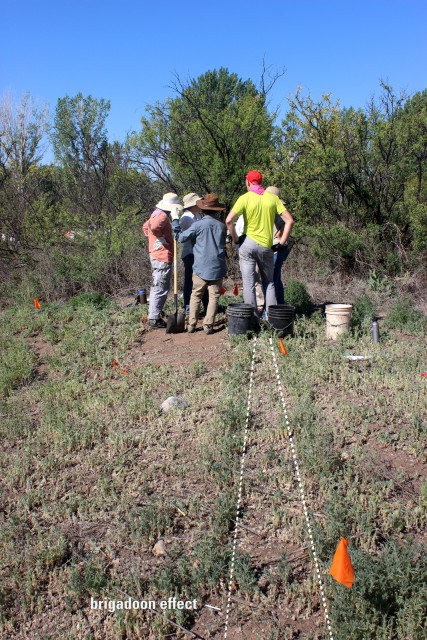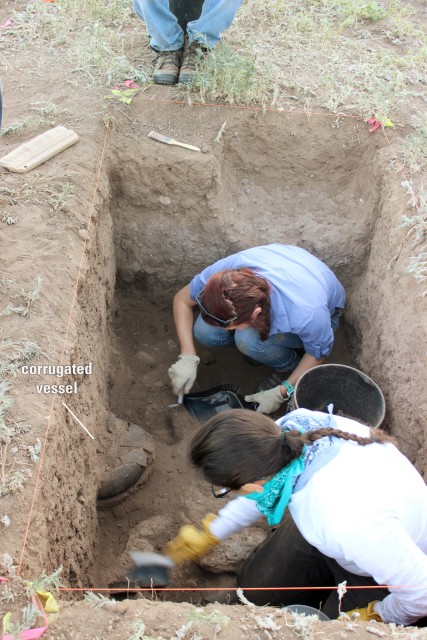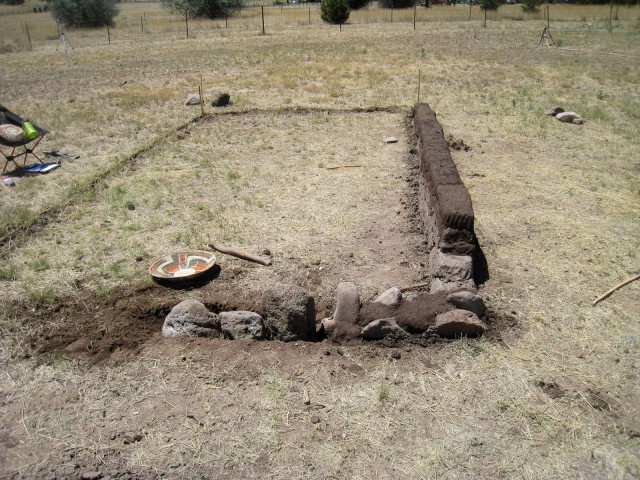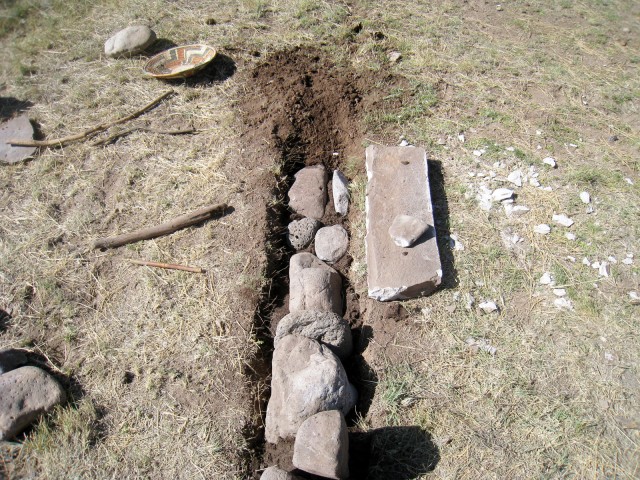- Home
- >
- Preservation Archaeology Blog
- >
- Adobe Walls
Conner Awayda, SUNY–Buffalo
(June 27, 2016)—Protecting from wind and rain, allowing cool temperatures in the summer, and heating in the winter, adobe makes up the walls of past homes. A mixture of sand and clay, adobe is made from earth and water. By mixing in water until the soil is the right consistency to be manipulated, it can be lifted by the handful and molded into walls. Advantages of adobe included its ability to be found naturally and be repaired by re-plastering with fresh adobe. Surviving many years, adobe walls of the past are found today and can help lead archaeologists in assessing the number of rooms in a site, guide in exploring a room during excavation, reveal the construction process, and increase our understanding of how home is conceptualized in a place.
At the Gila River Farm site where we are working, several room blocks were identified from aerial photos. The site is a perfect example of the “Brigadoon Effect,” where underground adobe walls are obstacles to plant life, so straight lines are formed from plants that grow right up to the edge of the wall. This evidence was the starting point in planning the locations of rooms on which to focus our excavation for the field season.
 |
 |
Adobe walls are not always easy to find, though. The Brigadoon Effect gives a rough idea of where they are, but because of rodent disturbance and agricultural activity, walls can sometimes “disappear” and leave archaeologists scratching their heads. Our unit proved to be difficult in this way. Our first 2 x 2-meter unit (about 6 feet x 6 feet) lay just against what was thought to be a wall corner based on surface vegetation. However, we encountered a thin layer of adobe across the unit that made digging time consuming. Over time, walls can fall in then melt from the sun, then harden again. This wall fall and adobe melt made us question what was really a wall, and what was just melted adobe. We actually didn’t realize until we were 20 centimeters deep (almost 8 inches) that we were digging right into a wall.
Once our first wall was found, exploring the room became easier. We followed the walls by digging along them, listening for the bell-like sound that occurs when a shovel hits adobe. In this way we outlined the adobe room and identified two more walls connecting to it, revealing more rooms added on two sides of the original room.

Experimental archaeology allows us to recreate adobe walls to get an idea of how difficult the process was, how much maintenance was needed, and how long the structures might last. At our base camp in Cliff, we are recreating adobe walls the same way they were made over 700 years ago. Using the earth we dig from the ground, we mix in water and start by building a wall with its foundation in a small trench, with cimiento stones (upright oblong stones at the bottom of the wall) for support.
Walls make up homes, and not only serve as a tool for locating ancient rooms and gathering data on how many people resided at a given site, but also allow us to question and imagine how building and living in adobe buildings played a part in the identity of past peoples.
Explore the News
Related to This
-
Project Hands-On Archaeology
